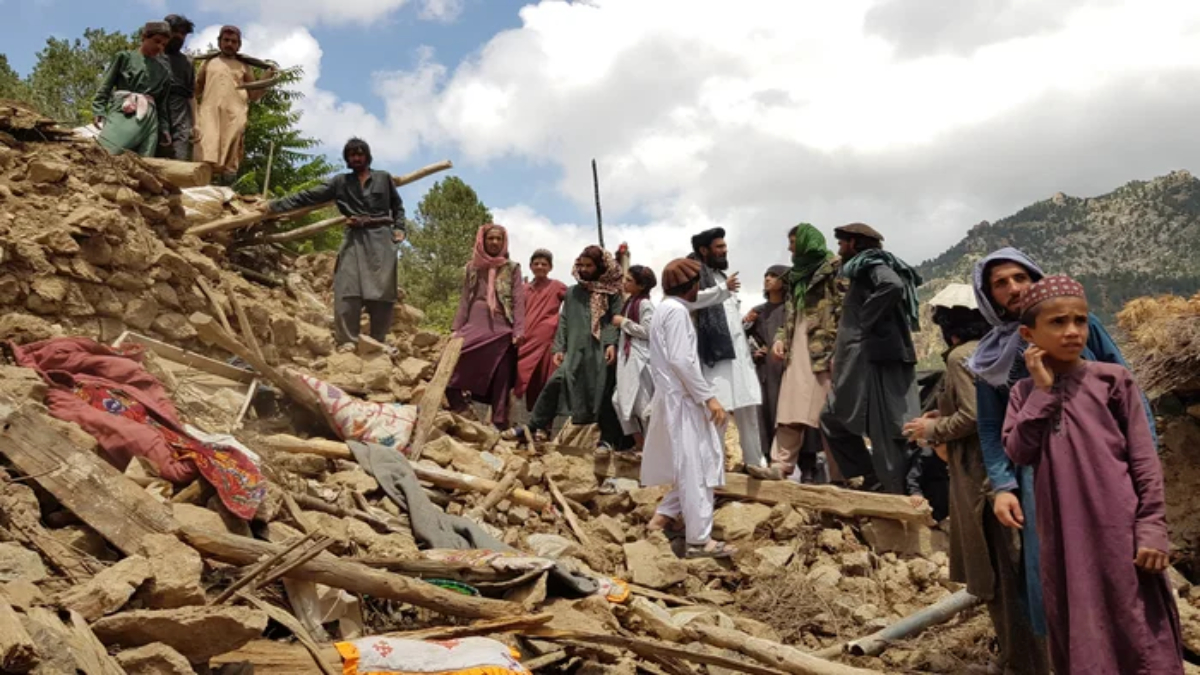Now Reading: Northern Afghanistan Hit by Deadly Earthquake, Casualties Climb
-
01
Northern Afghanistan Hit by Deadly Earthquake, Casualties Climb
Northern Afghanistan Hit by Deadly Earthquake, Casualties Climb

A powerful magnitude 6.3 earthquake has rocked northern Afghanistan, tragically killing at least 20 people and injuring a further 320, according to initial reports from local health authorities. The seismic event struck near the city of Mazar-e Sharif and its tremors were felt across a wide area, leading to panicked evacuations and visible destruction in the region.
The earthquake hit overnight, with the U.S. Geological Survey (USGS) placing the epicenter near the city of Mazar-e Sharif, one of Afghanistan’s largest urban centers. The quake’s relatively shallow depth, reported at 28 kilometers (17.4 miles), likely amplified the destructive force felt on the surface.
Rising Casualty Count and Rescue Efforts
The toll of 20 dead and 320 injured has been confirmed by spokespersons for the health departments in affected northern provinces like Samangan, which is close to the epicenter. Officials have cautioned that these figures are preliminary and may rise as rescue teams, including the Afghan Red Crescent Society, continue to access remote or heavily damaged areas and dig through rubble.
The severity of the impact prompted the USGS to issue an Orange Alert on its PAGER system, which analyzes the potential for casualties and economic loss. This alert level indicates that “significant casualties are likely and the disaster is potentially widespread,” suggesting that a full-scale regional or national response will be necessary to manage the aftermath.
Destruction of Historic Landmarks and Infrastructure
Beyond the immediate loss of life, the earthquake has inflicted considerable damage on infrastructure and historical sites. Reports indicate that a portion of the holy Mazar-i-Sharif shrine (known as the Blue Mosque) in Balkh province, a significant 15th-century landmark, has been damaged, with debris scattered across the grounds.
The tremors were powerful enough to be felt as far away as the capital, Kabul, some 420 km to the south. Initial reports also suggest that vital infrastructure was hit, including imported electricity lines from neighboring Uzbekistan, which were severed, plunging parts of at least nine provinces into darkness. Social media footage has captured the terrifying moments of the tremors, showing people rushing into the streets and scenes of collapsed or heavily damaged residential buildings.
Afghanistan’s Seismic Vulnerability
This devastating event underscores Afghanistan’s extreme vulnerability to earthquakes. The country is located in a highly active seismic zone where the Eurasian and Indian tectonic plates converge in the Hindu Kush mountain range.
Sadly, this is the latest in a series of catastrophic quakes to hit the nation, which is already grappling with a deep humanitarian crisis fueled by decades of conflict, economic instability, and drought. This recent tremor comes just a few months after another powerful earthquake that killed over 2,200 people in the country’s eastern regions. The combination of frequent seismic activity and poorly constructed homes often turns such natural disasters into large-scale humanitarian emergencies.
The United Nations and various international aid agencies are reportedly on the ground, assessing the needs of the affected populations and mobilizing urgent assistance. The widespread displacement and damage to critical services, like health and shelter, in an already impoverished nation, signal a prolonged and challenging recovery effort.










